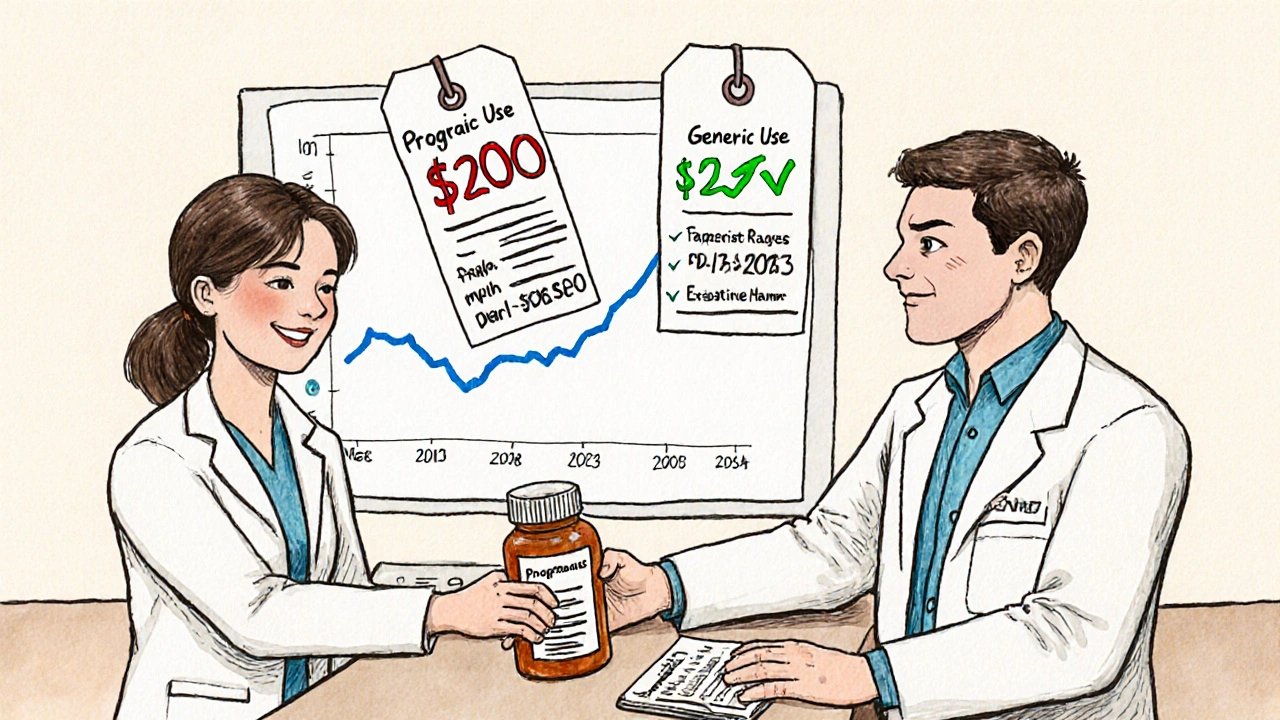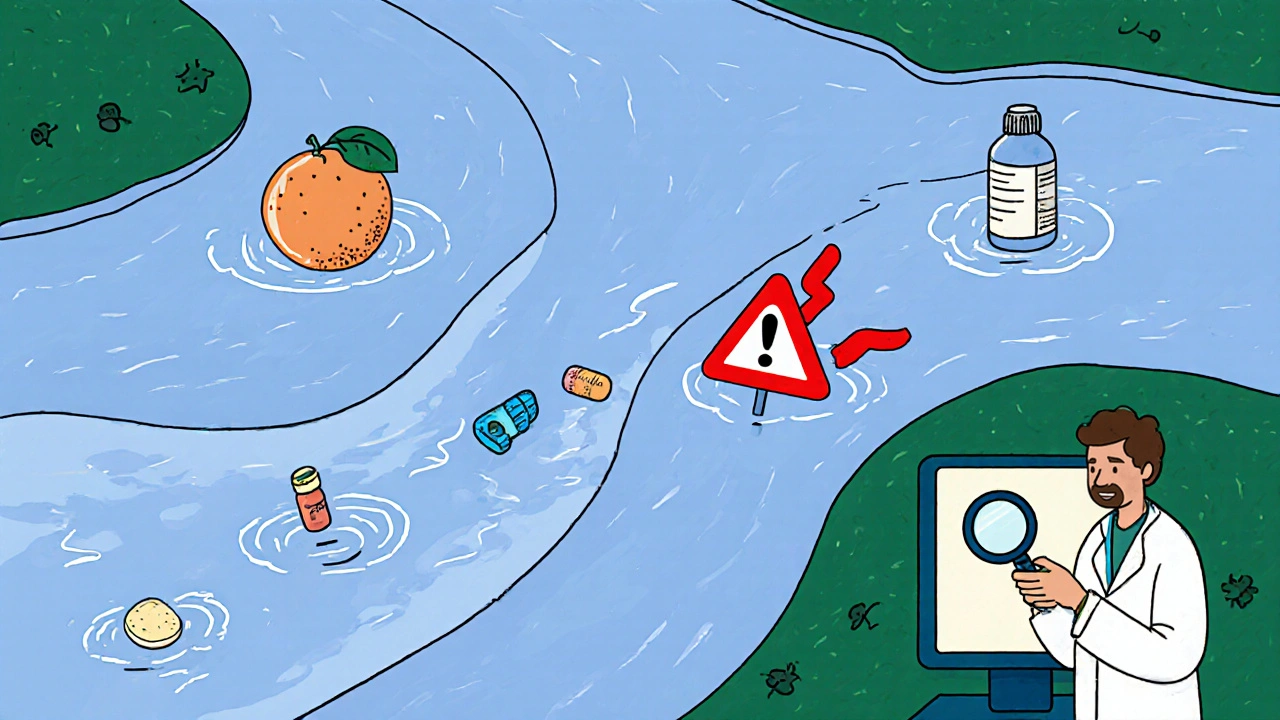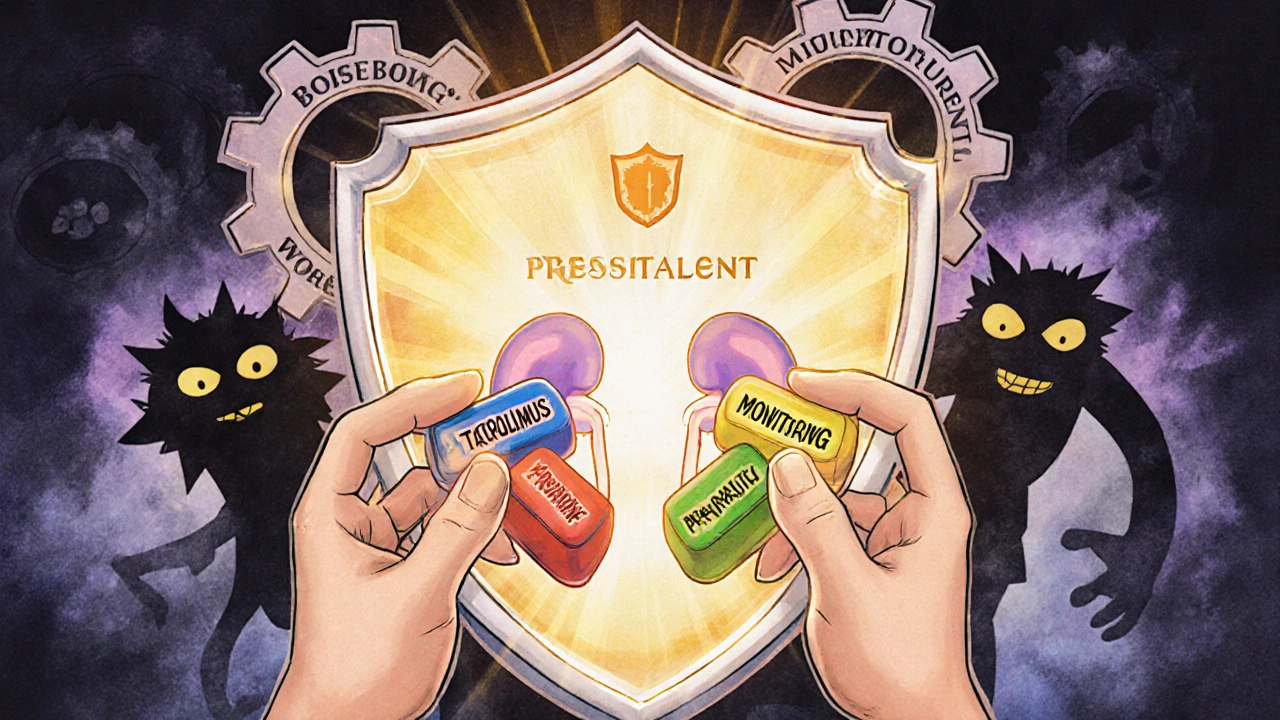When someone gets a kidney, liver, heart, or lung transplant, their body doesn’t just accept the new organ - it fights it. That’s why transplant patients take immunosuppressive drugs for the rest of their lives. These medications stop the immune system from attacking the transplant. But the cost can be crushing. Brand-name drugs like Prograf and CellCept used to cost $1,500 to $2,500 a month. For many, that meant skipping doses, rationing pills, or even losing the transplant. Now, generics are changing that - quietly, effectively, and sometimes controversially.
What Are the Standard Immunosuppressive Combinations?
Most transplant patients take three drugs together: a calcineurin inhibitor, an antimetabolite, and a steroid. This is called triple therapy. It’s not random - each drug hits the immune system in a different way. Together, they keep rejection rates low without over-suppressing the body.- Calcineurin inhibitors - Tacrolimus or cyclosporine. These are the backbone of most regimens. Tacrolimus is more commonly used today because it’s more effective and has fewer long-term side effects than cyclosporine.
- Antimetabolites - Mycophenolate mofetil (MMF) or mycophenolic acid (MPA). These stop immune cells from multiplying. MMF is the most common, but MPA is an alternative for people who can’t tolerate the original form.
- Corticosteroids - Prednisone or methylprednisolone. These are powerful anti-inflammatories. Many centers now try to reduce or eliminate them over time because they cause weight gain, diabetes, bone loss, and high blood pressure.
For kidney transplants, the most common combo is tacrolimus + MMF. About 64% of new kidney recipients get this mix. But it’s not the only option. Sirolimus (an mTOR inhibitor) is gaining ground, especially for patients at high risk of rejection or those who need to avoid steroids.
Generic Versions Are Now the Norm - But Not All Are Equal
The first generic tacrolimus hit the market in 2015. Since then, almost every key immunosuppressant has a generic version:- Tacrolimus (generic since 2015)
- Cyclosporine (generic since 2009)
- Mycophenolate mofetil (MMF, generic since 2019)
- Mycophenolic acid (MPA, generic since 2020)
- Sirolimus (generic since 2020)
Costs have dropped dramatically. Generic tacrolimus now runs $300-$400 a month. The brand version? $1,800-$2,200. That’s an 80% savings. Generic MMF costs $150-$250 vs. $1,200-$1,500 for CellCept. For a patient on lifelong therapy, that’s tens of thousands saved per year.
But here’s the catch: these aren’t just cheaper copies. They’re bioequivalent - meaning they’re supposed to work the same. The FDA requires generics to deliver 80-125% of the active ingredient compared to the brand. That’s a wide range. For drugs like tacrolimus, which have a narrow therapeutic window (just 5-15 ng/mL in blood), even small differences matter.
One study found 12% of patients needed dose adjustments within three months of switching to generic tacrolimus. Another showed 18% of transplant centers reported more rejection episodes during the switch. Why? Because different manufacturers use different fillers and coatings. One batch might absorb faster than another. That’s why most transplant centers now stick to one generic manufacturer for each drug - no switching between brands mid-treatment.
How Do Generics Compare in Real-World Outcomes?
The big fear: do generics cause more rejections? The data says no - if managed right.A 2022 analysis in the American Journal of Transplantation looked at over 10,000 kidney transplant patients. One-year graft survival was 95.1% with brand-name tacrolimus. With the generic? 94.7%. Statistically, no difference. The same pattern held for liver and heart transplants in other studies.
Some combinations even outperform the old standards. A 2019 study from the University of Maryland analyzed lung transplant outcomes and found patients on sirolimus + tacrolimus lived 8.9 years on average - longer than those on MMF + tacrolimus (7.1 years). That’s a big deal. But here’s the irony: only 2.3% of lung transplant patients got this combo because most doctors weren’t trained to use it.
Another win: steroid-sparing regimens. Using generic tacrolimus + sirolimus instead of adding prednisone cuts the risk of developing diabetes after transplant by 31%. That’s huge. Post-transplant diabetes affects nearly half of patients on steroids and leads to heart disease, nerve damage, and kidney failure.

The Hidden Challenges: Monitoring, Interactions, and Patient Experience
The biggest mistake? Assuming switching to generics is just a paperwork change.Therapeutic drug monitoring (TDM) is non-negotiable. Blood levels of tacrolimus, sirolimus, and MMF must be checked regularly - often every two weeks at first, then monthly. If levels dip below 5 ng/mL for tacrolimus, rejection risk spikes. If they go above 15 ng/mL, you risk kidney damage or neurological side effects like tremors or seizures.
Drug interactions are another silent killer. Over two-thirds of transplant patients on multiple generics experience at least one dangerous interaction. Antibiotics, antifungals, grapefruit juice, even St. John’s wort can spike or drop drug levels. A 2023 study showed that 67% of patients had at least one clinically significant interaction. That’s why pharmacists now play a central role - not just dispensing pills, but auditing every medication a patient takes.
Patients report mixed experiences. On patient forums, 68% say generics saved them money with no issues. But 22% had rejection episodes or side effects that forced them back to brand-name drugs. One Reddit user wrote: “Switched to generic tacrolimus in 2022, saved $1,500/month - but had three rejection episodes in the first year.” Another said: “Generic MMF has worked perfectly for me for three years. Saved over $18,000.”
Transplant centers are adapting. Eighty-five percent now require patients to stay on the same generic manufacturer. Forty-two percent say they need extra staff time to manage the transition. And 92% of transplant pharmacists now have specialized training in generic immunosuppressants.
Who Should Avoid Generic Combinations?
Not everyone is a good candidate. Some patients need to stick with brand-name drugs - at least for now.- Those with a history of rejection - If you’ve rejected a transplant before, your doctor may avoid switching you to generics.
- People with poor absorption - Conditions like Crohn’s, celiac, or gastric bypass surgery can make absorption unpredictable. Generics are riskier here.
- Patients on multiple interacting drugs - If you’re on six or more medications, the chance of a bad interaction skyrockets.
- Those with wound healing issues - Sirolimus can delay healing. Avoid it after recent surgery or if you have open sores.
Also, don’t switch mid-crisis. If you’re recovering from an infection, surgery, or acute rejection, hold off on changing meds. Stability comes first.

What’s Next? The Future of Generic Immunosuppressants
The market is moving fast. In 2023, the global generic immunosuppressant market hit $4.8 billion and is growing at over 9% per year. In the U.S., 82% of new kidney transplants now start on generic tacrolimus - up from just 15% in 2016.Two big trends are shaping the future:
- Interchangeable biosimilars - In May 2023, the FDA approved the first interchangeable biosimilar for belatacept (Nulojix). This could cut costs by 40% and set a precedent for other complex biologics.
- Complete withdrawal protocols - Clinical trials are testing whether some patients can eventually stop all immunosuppressants. One study (NCT00078559) used alemtuzumab induction followed by generic tacrolimus and sirolimus. Some patients remained rejection-free for years without any drugs. If this works, it could end lifelong medication for some.
Regulators are catching up too. In 2022, the FDA started pushing for tighter bioequivalence standards - 90-111% instead of 80-125% - for narrow therapeutic index drugs. That’s a win for safety.
And the cost pressure isn’t slowing. Medicare Part D now covers all transplant immunosuppressants. Insurance companies are pushing generics hard. Pharmacies are switching default prescriptions. Patients are asking for them.
How to Safely Switch to Generic Immunosuppressants
If you’re considering a switch, here’s what you need to do:- Talk to your transplant team - Never switch on your own. This is not like swapping ibuprofen brands.
- Get baseline blood levels - Your doctor needs to know your current tacrolimus, sirolimus, and MMF levels before switching.
- Stick with one manufacturer - Once you start on a generic, stay on it. Don’t switch between Teva, Sandoz, or Mylan unless your team says so.
- Monitor closely - Expect blood tests every two weeks for the first month, then monthly for three to six months.
- Watch for side effects - Fever, fatigue, swelling, or changes in urine output? Call your team immediately.
- Review all other meds - Bring your full list of prescriptions, OTCs, and supplements to every appointment.
The goal isn’t just to save money. It’s to survive - and thrive - with your transplant. Generics make that possible for far more people than ever before.
Are generic immunosuppressants as safe as brand-name drugs?
Yes - when used correctly. Multiple studies show equivalent graft survival rates between generics and brand-name drugs. The key is consistent dosing, regular blood monitoring, and avoiding manufacturer switches. The FDA’s 80-125% bioequivalence range is broad, but with careful management, outcomes are just as good.
Can I switch from brand to generic on my own?
Absolutely not. Immunosuppressants have a narrow therapeutic window. Even small changes in blood levels can cause rejection or toxicity. Always consult your transplant team before switching. They’ll check your levels, adjust your dose if needed, and schedule follow-up tests.
Why do some patients reject generic drugs?
It’s not the drug itself - it’s inconsistency. Different manufacturers use different fillers and coatings, which can change how quickly the drug is absorbed. If you switch between brands, your blood levels can swing dangerously. That’s why transplant centers require patients to stay on one generic manufacturer. Rejection episodes usually happen when patients are switched without monitoring.
Which generic immunosuppressants are the most cost-effective?
Tacrolimus and MMF offer the biggest savings. Generic tacrolimus costs 80% less than Prograf. Generic MMF saves 80-88% compared to CellCept. Sirolimus is also cost-effective and has added benefits like reducing diabetes risk. For most patients, the tacrolimus + MMF combo delivers the best balance of cost, effectiveness, and safety.
Do insurance plans cover generic immunosuppressants?
Yes - in the U.S., Medicare Part D is required to cover all FDA-approved immunosuppressants for transplant recipients. Most private insurers also cover generics and often require them as the first-line option. Some even have step therapy rules that force you to try generics before approving brand-name drugs.
What should I do if I think my generic medication isn’t working?
Don’t stop taking it. Contact your transplant team immediately. They’ll check your blood levels and may order a drug level test. If your levels are too low, they might increase your dose. If they’re too high, they’ll reduce it. Never adjust your dose yourself - even by a milligram - without medical supervision.
Are there any new generic immunosuppressants coming soon?
Yes. The first interchangeable biosimilar for belatacept (Nulojix) was approved in May 2023. More are in development. Researchers are also studying generic versions of everolimus and newer mTOR inhibitors. The focus is shifting toward combinations that reduce long-term side effects - like diabetes and kidney damage - while keeping rejection rates low.

Iska Ede
November 18, 2025 AT 13:35Katelyn Sykes
November 19, 2025 AT 22:32Bailey Sheppard
November 21, 2025 AT 02:12Gabe Solack
November 22, 2025 AT 11:27Gabriella Jayne Bosticco
November 23, 2025 AT 03:20Shaun Barratt
November 23, 2025 AT 09:14Yash Nair
November 24, 2025 AT 14:34Heidi R
November 26, 2025 AT 02:13Sarah Frey
November 27, 2025 AT 17:30Kristi Joy
November 29, 2025 AT 16:33Brenda Kuter
November 30, 2025 AT 07:16